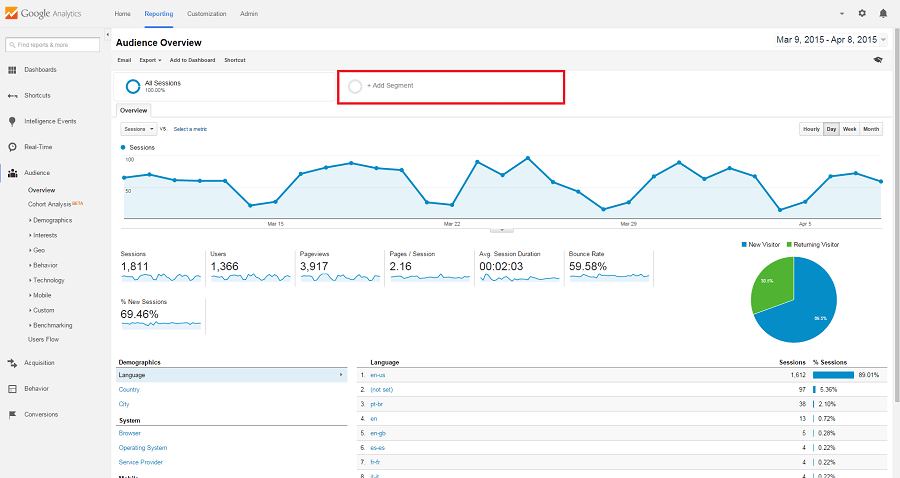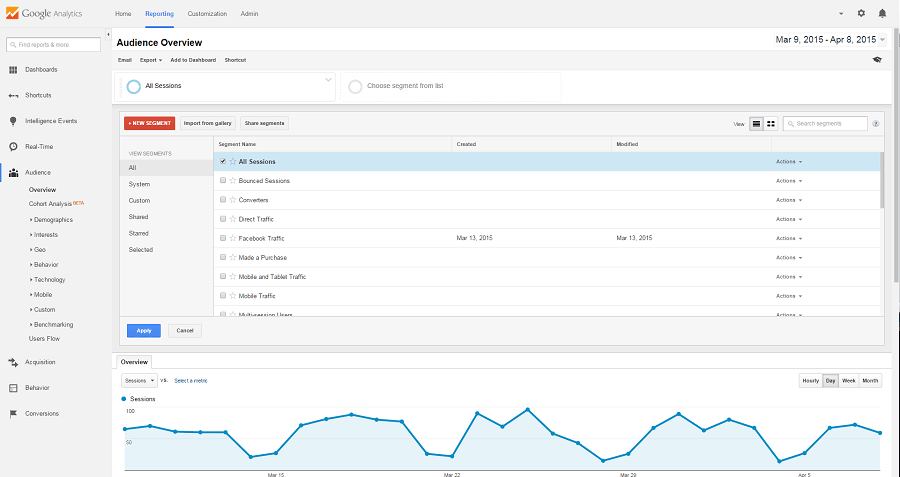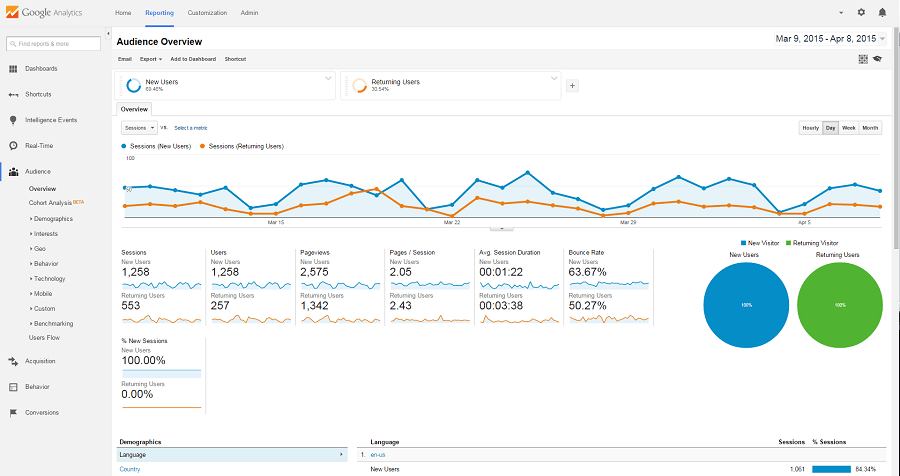Google Analytics is one of the best tools to gauge your website’s performance, and what’s even better is that it’s free. When used with the default settings, it’s already very powerful. But, there’s an easy way for you to get more out of your Analytics and it has to do with segmentation, which allows you to look at the behavior of a specific subset of website visitors.
What are Segments and Why Should I Use Them?
Your website attracts traffic from many different sources: organic search, paid search (e.g. Google ads), social media, et cetera. Some of your website’s visitors may be new and others may have been to your site once, twice, or ten times before. Different visitors will also have different reasons for visiting — some are looking for information before making a purchase and others are landing on your site with the intent of making an immediate transaction. If there are subsets of users with different intents, then it’s reasonable to expect for them to behave differently when they arrive to your site.
Data that aggregates all users can hide many of the important nuances of the behavior of specific subsets of users. Consider the following example. A new visitor — someone who has never visited your site before — may behave completely differently than a returning visitor, in terms of time spent on site, which pages were visited, and how many pages were visited. By looking at data for each subset, you can get a more accurate picture of what your site is doing well and what’s lacking, and you can optimize it in a way that addresses the needs of each type, or subset, of visitor.
On Google Analytics, you can analyze data for a specific subset of users or sessions through segmentation. What’s the difference between a user and a session? A user refers to the specific person who visited your site. A session is the visit itself. Whether you segment by user or segment depends on what questions you’re trying to answer. Some examples:
- How well is my Facebook advertising campaign meeting its goals? Segment by session — only sessions that originate from a Facebook ad.
- Are returning visitors who made a previous purchase coming back to buy more? Segment by users — only users who have made a previous purchase.
- Are my newsletters bringing in visitors who are buying my products or services? Segment by session — only sessions originating from your newsletters.
- How many new visitors are making purchases on their first visit? Segment by users — only new visitors.
How do I Segment my Data?
Applying a segment to your Analytics data takes only a few steps, especially if you take advantage of the pre-existing segments that Google Analytics provides you with. You can also make custom segments, allowing for even greater depth of analysis. Analytics, for instance, does not offer a default segment for social media traffic, but you can create one through the segmentation tool.
How are segments applied? When you enter Analytics and choose your “view,” which is where the actual data for your website is reported, you are sent to a screen showing time series data for “All Sessions.” On that screen, you should see boxes above the graph, one of which reads “Add Segment:”

You can add a segment the same way from any screen in the Reporting section of your Analytics account. Clicking on the “Add Segment” button will open a new module on your screen, which looks like this:

Suppose you wanted to segment your data by new visitors and returning visitors. Both of these segments are already provided to you by default, so all you need to do is scroll down the list of options and choose them:

When you’ve checked the segments you want to analyze, you hit apply and, voila, Google Analytics will automatically update the data:

Now you can see time series data for two types of users, allowing you to better gauge how well your investments are doing at attracting visitors from each subset. For example, maybe you’ve spent money on a retargeting campaign — ads that are seen by people who have interacted with your business before — and want to see how that has affected the volume of returning users. Or, maybe your business relies more heavily on new customers, so you want to look at how well your marketing campaign attracts new visitors and how well it converts them into customers.
The last example about looking at how well your website is acquiring new users is a great one to show how vital it is to segment your data. If you look at data for “All Sessions,” Analytics returns a ratio between new and returning visits. But, this ratio doesn’t really tell you much. Suppose the percentage of new users increases. Does that mean you’re getting more new users? Not necessarily, instead it could mean that the number of returning visitors have begun to drop off. By segmenting your data, you can look at each component separately to get a more accurate assessment.
Made a mistake with your segments? No problem! One of the great features of this tool is that you don’t lose any of the data by parsing it. You can simply remove your segments and start over again.
Getting the Most Out of Google Analytics
Google Analytics is an extremely powerful tool, even on its basic settings. But, when used properly, it can give you an amazingly detailed look at how your digital marketing strategy is working. Even this post only touches the surface of what you can do with the platform and, if you’re new to it, it can all be quite intimidating. Don’t worry; in future posts we will continue to explore Google Analytics, so make sure to visit us again.
At Now Media Group, we use Google Analytics routinely to gauge how your website is performing in conjunction with other elements of your internet presence, such as paid advertising and social media. By using precise data, we can pinpoint gaps in your strategy and then reinforce these to make your marketing campaign that much more efficient. To learn more about using Analytics with Now Media Group, please contact your consultant today: 858-333-8950.
